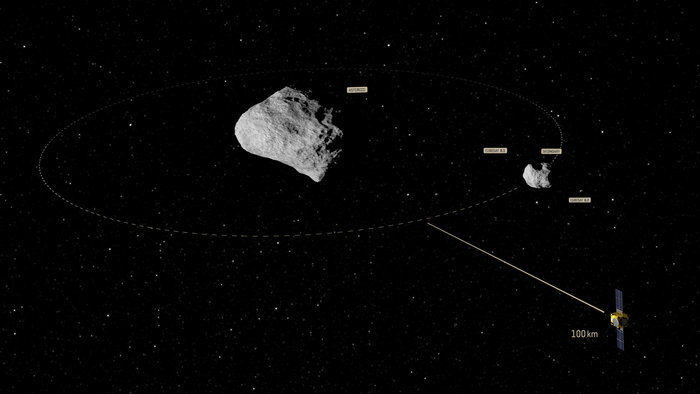It looks like you're using an Ad Blocker.
Please white-list or disable AboveTopSecret.com in your ad-blocking tool.
Thank you.
Some features of ATS will be disabled while you continue to use an ad-blocker.
2
share:
The ESA’s Asteroid Impact Mission is launching a spacecraft towards the Didymos Asteroids which includes a moon "Didymoon". It is sent to launch in
October 2020.

However, here is the part that doesn't go awry and sends the moon crashing into us
It's something out of a movie but i'm glad that they are finally going to taking deep space asteroids seriously. Even though it will only be 11 million miles, I'm hoping this impact doesn't push it closer to us.
www.astrobio.net...

Launched in October 2020, AIM will travel to a binary asteroid system – the paired Didymos asteroids, which will come a comparatively close 11 million km to Earth in 2022. The 800 m-diameter main body is orbited by a 170 m moon, informally called ‘Didymoon’.
This smaller body is AIM’s focus: the spacecraft will perform high-resolution visual, thermal and radar mapping of the moon to build detailed maps of its surface and interior structure.
However, here is the part that doesn't go awry and sends the moon crashing into us
For AIM is also Europe’s contribution to the larger Asteroid Impact & Deflection Assessment mission: AIDA. In late 2022, the NASA-led part of AIDA will arrive: the Double Asteroid Redirection Test, or DART, probe will approach the binary system – then crash straight into the asteroid moon at about 6 km/s.
“AIM will be watching closely as DART hits Didymoon,” explains Ian Carnelli, managing the mission for ESA. “In the aftermath, it will perform detailed before-and-after comparisons on the structure of the body itself, as well as its orbit, to characterise DART’s kinetic impact and its consequences.
It's something out of a movie but i'm glad that they are finally going to taking deep space asteroids seriously. Even though it will only be 11 million miles, I'm hoping this impact doesn't push it closer to us.
www.astrobio.net...
edit on 2-4-2015 by
blackmetalmist because: ...
new topics
-
Let's talk planes.
General Chit Chat: 3 hours ago -
January 6th report shows disturbing trend (nobody is shocked)
US Political Madness: 5 hours ago -
Inexplicable military simulation - virtual reality showdown in the night..
The Gray Area: 5 hours ago -
The Truth about Migrant Crime in Britain.
Social Issues and Civil Unrest: 6 hours ago -
Trudeau Resigns! Breaking
Mainstream News: 8 hours ago -
Live updates: Congress meets to certify Trump's presidential election victory
US Political Madness: 9 hours ago -
Gravitic Propulsion--What IF the US and China Really Have it?
General Conspiracies: 9 hours ago -
Greatest thing you ever got, or bought?
General Chit Chat: 9 hours ago
2
